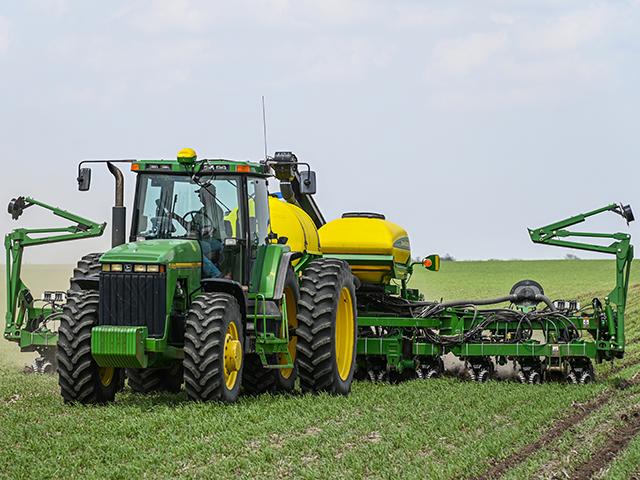Long-Term Leases Encourage Conservation Efforts
New Lease on Conservation
A key obstacle to conservation adoption on leased farmland is the amount, length or lack of rental written agreements.
About half of farmland in the Midwest -- a little less in other parts of the country -- is rented through short-term leases, according to a 2020 Iowa State University (ISU) study, "What Drives Landowners' Conservation Decisions?" A short-term lease is defined as one to two years.
"Farmland rental arrangements where tenants may not reap the benefits of conservation investments are a commonly cited barrier to conservation practice adoption in agriculture and may result in lower adoption rates on rented land than on owner-operated fields," the study says.
For example, the study indicates full- and part-time owner-operators have cover crops on a greater portion of their owner-operated land than land that's rented out -- 7% vs. 3% and 3% vs. 1%, respectively. The study also indicates fewer grass buffer strips and ponds/sediment basins are likely to be on land that's rented compared to land that's farmed by the owner.
LEASE LENGTH INSPIRES CONSERVATION
Ann Johanns, an ISU Extension educator specializing in farm management and leasing, recommends landowners and farmer-tenants discuss goals, rental rates and future adjustments, conservation objectives and how practices will be paid for and other concerns. Incorporate agreed-upon items into lease agreements. Since conservation practices are often multiyear projects without an immediate payback, Johanns says three- to five-year leases or longer may encourage more conservation work on rented farmland.
"Let's look at longer-term leases where we're going to implement (conservation practices) that might have a learning curve," Johanns says. "For us to move the needle when we talk about implementing conservation practices, landowners and renters have to be in the conversation."
P[L1] D[0x0] M[300x250] OOP[F] ADUNIT[] T[]
Iowa farmer Wayne Fredericks says farmland leases of at least three years or longer are needed to give farmers confidence to invest in conservation practices on land they don't own, such as equipment for no-till and strip-till production, and planting cover crops.
"It's hard to make an investment in different equipment and risk the possibility of a temporary drop in yields for a one-year shot at land," says Fredericks, who religiously plants cover crops and abandoned conventional tillage decades ago.
SIGN ON THE DOTTED LINE
Chesapeake Bay Foundation (CBF) officials say handshake farm rental agreements are common (estimates weren't available) on the East Coast. It impedes adoption of conservation practices on agricultural lands to reduce nutrient runoff into the Chesapeake Bay.
"When there is no lease, there tends to be less conversation about caring for the land or making future plans that involve using USDA NRCS (Natural Resources Conservation Service) cost-share resources to implement conservation practices," says Bill Chain, CBF's Pennsylvania ag program manager.
The foundation fights for effective, science-based solutions to pollution degrading the bay and rivers and streams that feed it. The conservation group reported earlier this year that states in the bay watershed will come up far short of having all practices and controls in place by 2025, per the Chesapeake Clean Water Blueprint, to restore the health of the bay and its waterways.
Bolstering landowner and farmer-tenant relationships, and public funding to get more conservation practices on the landscape are critical parts of bay restoration. "I think if we could enhance that conversation about conservation implementation, we'll get those activities going," Chain adds.
Encouraging farmland owners and renters to sign long-term lease agreements with conservation provisions is a top priority of the foundation. That will help promote soil health and water quality into agronomic systems, says Matt Kowalski, CBF's Virginia watershed restoration scientist.
As farmland lease numbers rise, he expects to see more long-term investments in nutrient management, livestock stream exclusion infrastructure and other practices.
"We're not going to see long-term success unless we're looking long term," Kowalski says.
**
FOR MORE INFORMATION:
-- "What Drives Landowners' Conservation Decisions?" PDF: https://www.card.iastate.edu/…
-- Chesapeake Clean Water Blueprint: https://www.dtnpf.com/…
-- Follow the latest from Matthew Wilde, Crops Editor, by visiting the Production Blogs at https://www.dtnpf.com/… or following him on Twitter @progressivwilde
[PF_0622]
(c) Copyright 2022 DTN, LLC. All rights reserved.



